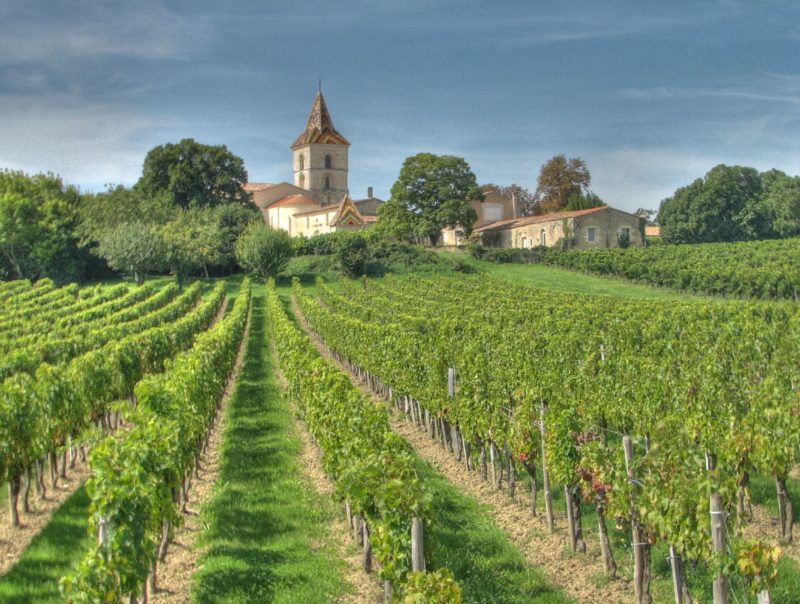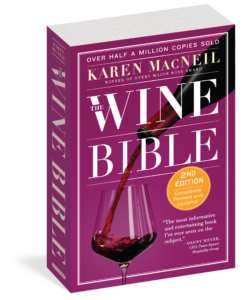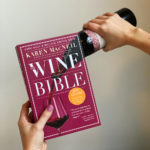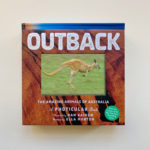Excerpted from Karen MacNeil’s The Wine Bible, 2nd Edition.
Bordeaux—the word alone fired the mind with the anticipation of greatness. No other wine region is more powerful, more commercially successful, or more important as a source of profoundly complex, ageworthy wines. Here is a brief introduction to the grapes you’ll find there, known for their elegance, while still possessing concentrated, powerful flavors.

The Grapes of Bordeaux
Whites
MUSCADELLE
A minor native grape sometimes incorporated into modestly priced blends for its light floral character. Not related to varieties with the word muscat in their names.
SAUVIGNON BLANC
Major grape. Crisp, austere, lively. Has an herbal freshness. Usually blended with sémillon.
SÉMILLON
Major grape. Dry and clean. Provides weight and depth and, with age, a honied character. Usually blended with sauvignon blanc. The primary grape for Sauternes.
Reds
CABERNET FRANC
An important grape in Bordeaux, highly valued in blends even in small amounts. Often said to contribute aromatic intensity and notes of violets and spices. Especially important in the Right Bank communes of St. Émilion and Pomerol.The only one of the major Bordeaux reds to have originated elsewhere. (Cabernet franc is native to the Basque region of Spain.)
CABERNET SAUVIGNON
The second leading red grape in terms of acreage, after merlot. At its best, intense, deeply fla- vored, and complex. Provides the frame- work and structure behind many of the top wines. Most of the wines of the Left Bank (the communes of Margaux, St.-Julien, Pauillac, and St.-Estèphe) are based on it.
CARMENÈRE
Ancient Bordeaux variety (also known as grande vidure).The prog- eny of cabernet franc, but nearly extinct in Bordeaux today.
MALBEC
Old southwestern French variety also known by its original name, côt. Planted in only tiny amounts in Bordeaux today, used to add touches of nuance.
MERLOT
Bordeaux’s major grape in terms of production, constituting more than 60 percent of all planted acres. Along with cabernet sauvignon, one of the two main grapes in most blends. At its best, round and supple. Sometimes characterized as the flesh on cabernet sauvignon’s bones.
PETIT VERDOT
A minor grape in terms of production, but even small amounts are highly valued in blends. Contributes vivid color, flavor intensity, and tannin.
 About the Book
About the Book
Announcing the completely revised and updated edition of The Wine Bible, the perennial bestselling wine book praised as “The most informative and entertaining book I’ve ever seen on the subject” (Danny Meyer), “A guide that has all the answers” (Bobby Flay), “Astounding” (Thomas Keller), and “A magnificent masterpiece of wine writing” (Kevin Zraly).
Like a lively course from an expert teacher, The Wine Bible grounds the reader deeply in the fundamentals while layering on informative asides, tips, amusing anecdotes, definitions, glossaries, photos (all new for this edition), maps, labels, and recommended bottles. Karen MacNeil’s information comes directly through primary research; for this second edition she has tasted more than 10,000 wines and visited dozens of wine regions around the world. New to the book are wines of China, Japan, Mexico, and Slovenia. And through it all the reader becomes ever more informed—and, because of the author’s unique voice, always entertained: “In great years Pétrus is ravishing, elegant, and rich—Ingrid Bergman in red satin.” Or, describing a Riesling: “A laser beam. A sheet of ice. A great crackling bolt of lightning.”
Buy the Book
Amazon | B&N | Indiebound | Workman





No Comments